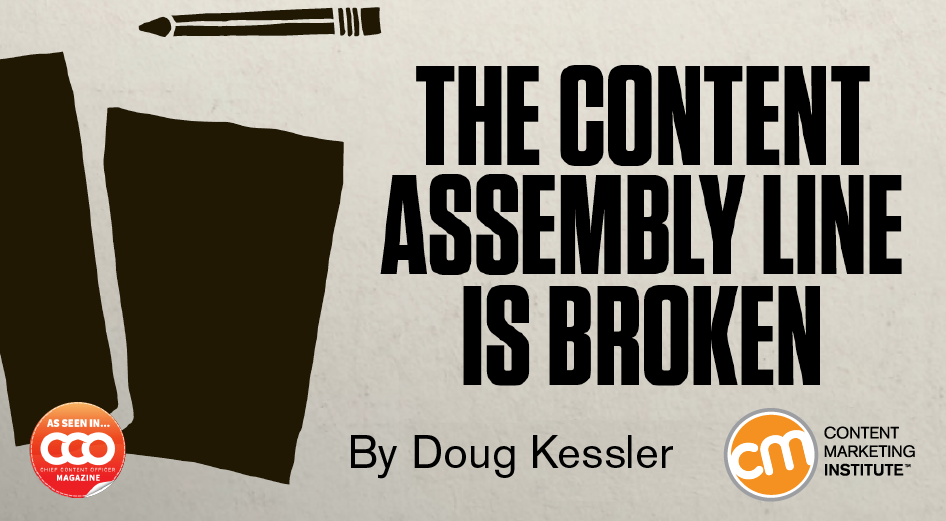Author: Doug Kessler / Source: Content Marketing Institute As companies turn their content marketing efforts up to 11, we’re seeing our o

As companies turn their content marketing efforts up to 11, we’re seeing our own little industrial revolution, moving the content creation process from the craft workshop to the high-volume assembly line.
The conditions are right:
- We have the division of labor – research teams, copywriters, designers, developers, experts in search, and social.
- We have enormous pressure to create more content faster – to lubricate our lead-nurture flows and fill our virtual funnels.
- And we have a precedent – as Henry Ford and earlier pioneers proved that assembly lines dramatically increase manufacturing productivity.
It’s no surprise that we tend to make content the same way we make cars and coffee machines – in sequence:
- The researchers hand the findings to the writer.
- The writer turns it into copy.
- The designer makes it pretty (boy, am I going to get in trouble for that).
- The illustrator adds the images.
- The animator makes them wiggle (see above).
- The developer codes it for the web.
- The promotion team pushes it out.
- The analytics geeks measure the impact.
- And we do it all over again tomorrow.
It’s not at all uncommon that this whole thing happens without any team member even talking to the person immediately to the right or left of them along the conveyor belt (much less skipping a level and talking to someone two steps away).
For an increasing number of content teams, this is only a slight exaggeration. A freelance writer may never even know who designed the piece. A research strategist may not even know that a social media pro will one day flog the findings on Facebook.
It’s evolved this way because it’s efficient. Because it means a small team of specialists can churn out an awful lot of work to an acceptable standard.
And that’s the problem.
Because…

COMMENTS